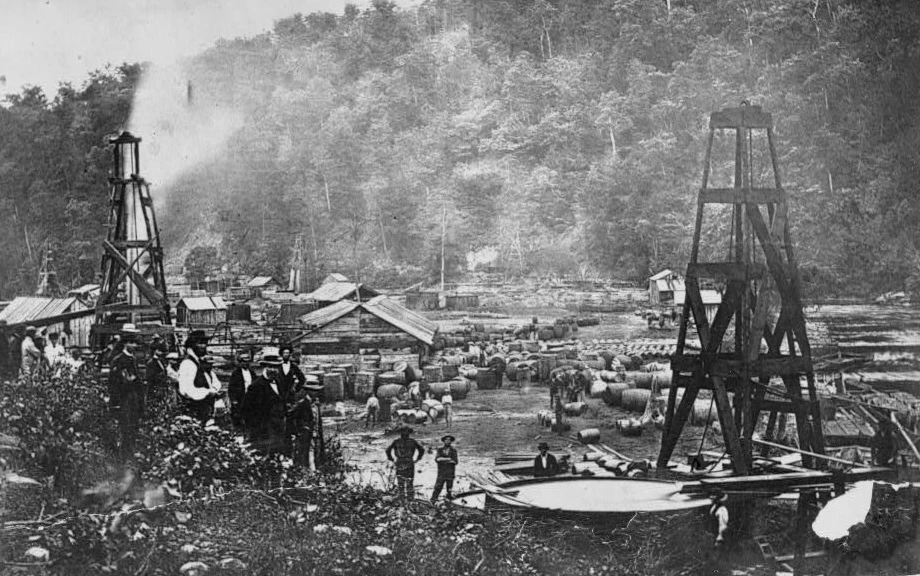Stone Oil
Manufacturers and Farmers Journal, February 20, 1860
Discovery in Pennsylvania
Pennsylvania is about to add to her vast mineral resources another product of the mineral kingdom, known in countries where it is most common as Stone Oil or Petroleum. The discovery of this substance has recently been made in Crawford and Venango counties in the valley of Oil Creek River, which seems to owe its name to the preliminary discovery, as far back as Indian times, of oil floating upon the surface of the water.

Early Attempts at Collection
The idea of collecting the oil, indeed, is not new. Many years ago, it was attempted, by awkward appliances, and with only partial success. Vats were conducted to receive it, and it was taken by saturating woolen cloth with it and wringing it out. The supply seemed to be perennial, but until now no successful efforts have been made to reach the sources of the flow. It is found that by sinking wells, or boring from a hundred to a hundred and fifty feet, a fountain of pure mineral oil may be struck, and large quantities obtained with little comparative difficulty.
Reports of Large Yields
One spring thus tapped has yielded eight hundred. Another, twelve hundred gallons a day. So at least the current reports inform us. But it must be borne in mind that these reports spring from highly excited sources, and are therefore liable to exaggeration. It appears that the discovery has produced a sensation in northwestern Pennsylvania scarcely inferior to the gold fever of California. Already we hear of rich oil “placers” and of astonishingly profitable results of oily labors here and there. People of all sorts are crowding to the locality in mad anticipation of a smooth road to fortune.

Stone Oil Around the World
This oil is undoubtedly the real petroleum, which is a viscid variety of bitumen, flowing from beds associated with coal strata. It is found, we believe, in other parts of this country and in Europe, but chiefly in Asia. In some of our Western States, where it exists, it is called Seneca or Genesee oil. It is found also in the island of Barbados. It is generally of a dark reddish-brown color, is slightly translucent, and its odor is bituminous. That of Barbados, however, is greenish, and resembles tar; and there it supplies the place of pitch as well as of lamp oil.
Uses and Production in Burma
In general, it is used for all the common purposes of oil. The famous petroleum wells of Burma produce some half a million hogsheads of oil annually. The wells are upwards of five hundred in number and occupy altogether a space of about sixteen square miles. The wells or pits from which the petroleum is obtained, are artificial perpendicular shafts, commonly from 200 to 250 feet deep. At the bottom of the pits the liquid seems to boil; but whether from the emission of gaseous fluids or simply from the escape of the oil itself from the ground, is not known.
Practical Applications of Petroleum
The oil is taken in earthen pots. At first it is thin, but grows thicker, and in cold weather it coagulates. It has a pungent, aromatic odor. It is an article of export, but immense quantities are used in the Burman empire. It is not only burned in lamps, but is used for smearing timber, to protect it against insects, especially the white ant1, which will not approach it. The country near these petroleum wells is remarkable for its petrified wood and its fossil bones. — Boston Courier.
- A termite. ↩︎
